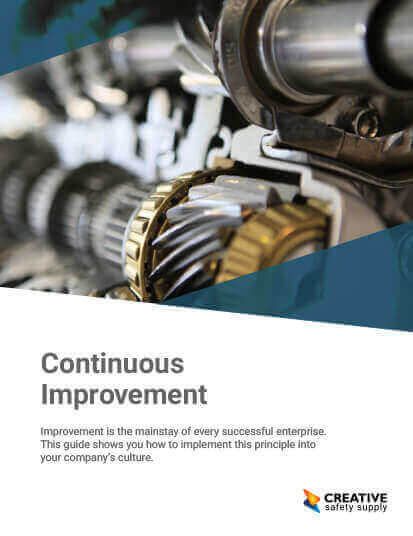Zero Defects in Lean Manufacturing
 Improving quality is a major ingredient to success in any business, especially in manufacturing organizations. A method of improving quality is to employ the philosophy of "Zero Defects." Zero Defects was first introduced by American businessman, Philip Crosby, in his "14 Step Quality Improvement Process". This philosophy is a mentality or movement, as it has no defined set of steps or rules to follow. Zero Defects aim to minimize the number of defects in manufactured products and services as much as possible and rely on each company to customize its own set of rules to follow. This may make zero defects more difficult to define than other set processes but also makes it very effective because it is adaptable to any situation, business, and industry.
Improving quality is a major ingredient to success in any business, especially in manufacturing organizations. A method of improving quality is to employ the philosophy of "Zero Defects." Zero Defects was first introduced by American businessman, Philip Crosby, in his "14 Step Quality Improvement Process". This philosophy is a mentality or movement, as it has no defined set of steps or rules to follow. Zero Defects aim to minimize the number of defects in manufactured products and services as much as possible and rely on each company to customize its own set of rules to follow. This may make zero defects more difficult to define than other set processes but also makes it very effective because it is adaptable to any situation, business, and industry.
The Principles of Zero Defects are:
- Quality is defined as conformance to the requirements
Every product or service should have a requirement (a description of what the customer expects to see). A product achieves quality when it meets those requirements. Individual products will have their own set of standards to meet, so there is still a wide range of product standards in various products, but each product must meet the ITS set of requirements to achieve zero defects. - Defects prevention is better than quality inspection and correction
In other words, it's better to find a defect in the process and fix it, rather than find the defect in the finished products. If you spend time and money fixing the process instead of inspecting products for defects, it is time and money well spent. - Quality standard means zero defects
Simply stated, any product that does not meet the requirements set forth for that product will not be accepted by the customer and does not satisfy the customer's need. If a product does satisfy the customer's needs even if it doesn't meet all of the requirements, then the requirements need to be reviewed and changed to reflect reality. - Quality is measured in terms of money (i.e. the price of non-conformance: PONC)
This philosophy assumes that every defect represents a hidden cost: inspection time, rework, revenue, wasted material, labor, and customer dissatisfaction. When properly identified, the costs can be measured and can justify spending money on steps to improve quality. This provides a monetary way to measure the Zero Defect Management Process, which is a concrete and essential way to maintain management commitment in ensuring company goals are met.
Zero Defects is an effective philosophy for Quality Management. You will make your own rules and set your own set of standards, but when followed, it is an effective Lean Manufacturing tool.



